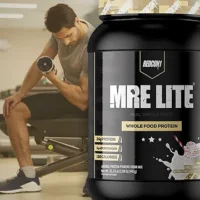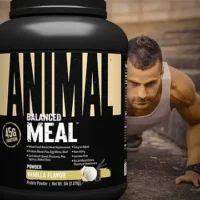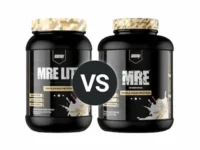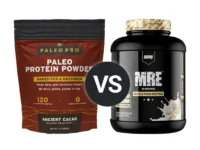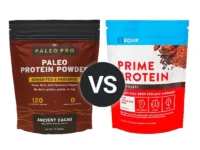Knowledge BaseYou're Questions Answered
BACK
How is beef protein powder made?
Beef protein powder is produced from beef that has been processed to remove most of the fat and carbohydrates, leaving primarily protein content. This process involves several key steps that transform whole beef into a powdered and consumable form that is high in protein and easy to digest. Here’s an overview of the process:
- Raw Material Sourcing: The production of beef protein powder starts with the sourcing of beef. Typically, parts of the cow that are less desirable for conventional consumption (such as connective tissues and trimmings) are used, as they are still rich in protein1.
- Heat Treatment: The sourced beef parts are then heat-treated to remove fat and reduce potential pathogens. The heat treatment also helps to denature the proteins, making them easier to digest and to convert into powder form2.
- Enzymatic Hydrolysis: After heat treatment, the product undergoes enzymatic hydrolysis. During this step, natural enzymes break down the proteins into smaller peptide chains and amino acids, which increases the protein’s bioavailability3.
- Filtration and Purification: The hydrolyzed protein solution is then filtered to remove any residual fat and carbohydrates. Additional purification processes might be applied to remove other unwanted materials such as heavy metals and to ensure the protein is pure4.
- Spray Drying: The purified protein solution is then spray dried. This process involves spraying the liquid protein concentrate through a nozzle into a hot chamber, which quickly dries the liquid into a fine powder without denaturing the proteins further5.
- Packaging: The final step in the production process is packaging the beef protein powder. It is typically packed under nitrogen to preserve the quality of the protein and prevent oxidation6.
Was this answer helpful? Let us know!
Like
References:
- Li-Chan, E., Hunag, S. L., & Jao, C. L. (2011). Peptides derived from Atlantic salmon skin gelatin as dipeptidyl-peptidase IV inhibitors. Journal of Agricultural and Food Chemistry, 59(12), 6827-6834.
- Ramírez, M., Amate, L., & Gil, A. (2001). Effects of heat treatments on the stability of proteins in relation to methods of drying. Journal of Agricultural and Food Chemistry, 49(8), 3764-3770.
- Smithers, G. W. (2008). Whey and whey proteins—From ‘gutter-to-gold’. International Dairy Journal, 18(7), 695-704.
- Klein, B. P., & Perry, A. K. (1982). Aspects of enzyme hydrolysis of proteins: effects on protein functionality. Journal of Food Science, 47(6), 1970-1977.
- Masters, K. (1991). Spray drying handbook. 5th edition. New York: Longman Scientific & Technical.
- Fontana, A. J. (1997). Nitrogen's role in food packaging. Food Technology, 51(9), 72-74.
Add to this Answer
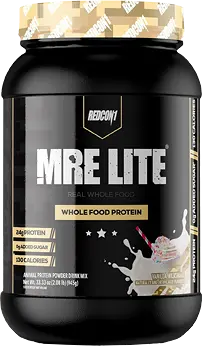
Disclosure
Your Answer
Do you have a suggestion to improve the answer? Please detail your suggestions and provide any references to information that may support your answer if available.
The content on this site has not been written, reviewed or endorsed by a medical professional. We assume no liability for the misuse of supplements and recommend you review the label of any product, as well as consulting with your health care professional.
We are a participant in the Amazon Services LLC Associates Program, an affiliate advertising program designed to provide a means for us to earn fees by linking to Amazon.com and affiliated sites.
We are a participant in the Amazon Services LLC Associates Program, an affiliate advertising program designed to provide a means for us to earn fees by linking to Amazon.com and affiliated sites.
© 2025 ProteinPowder.com
